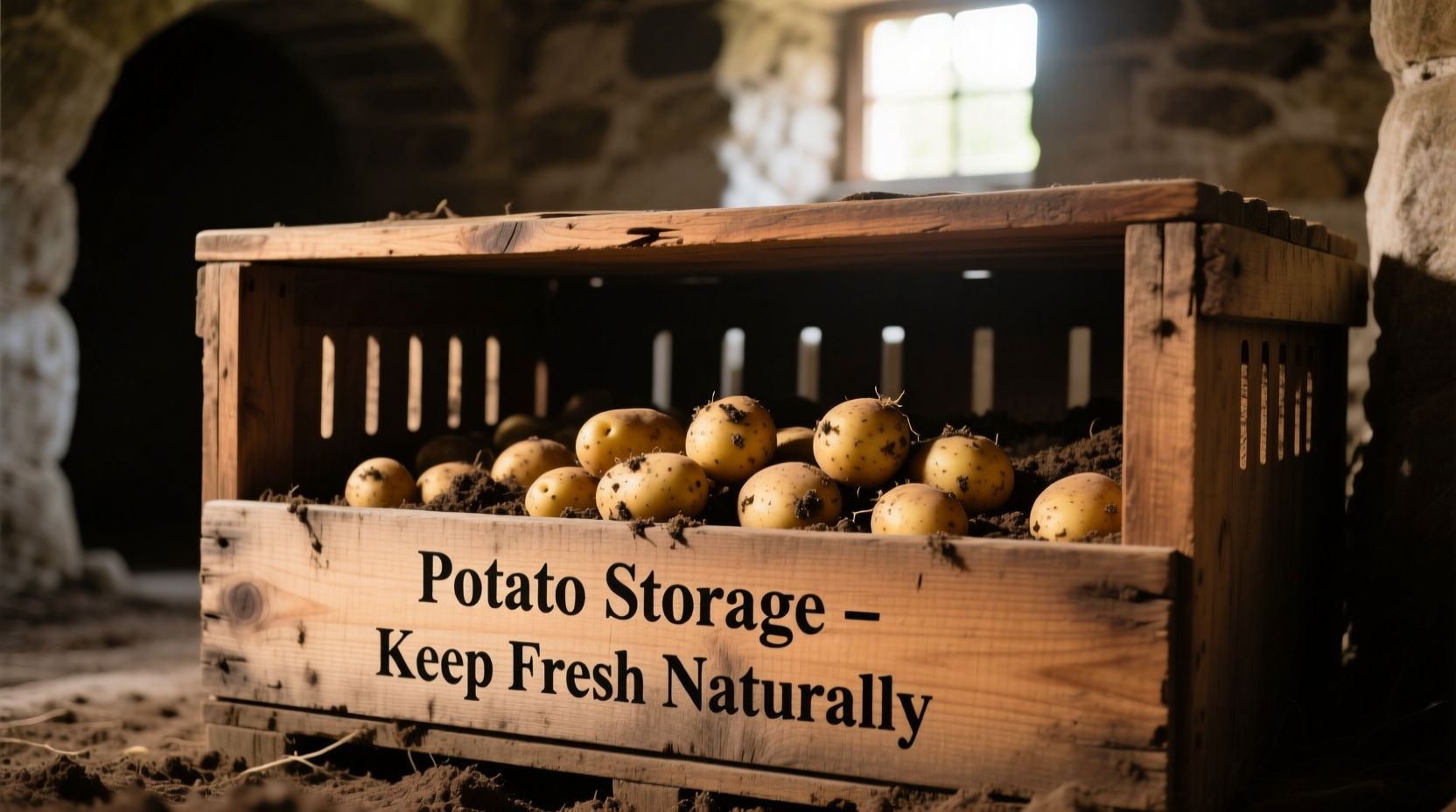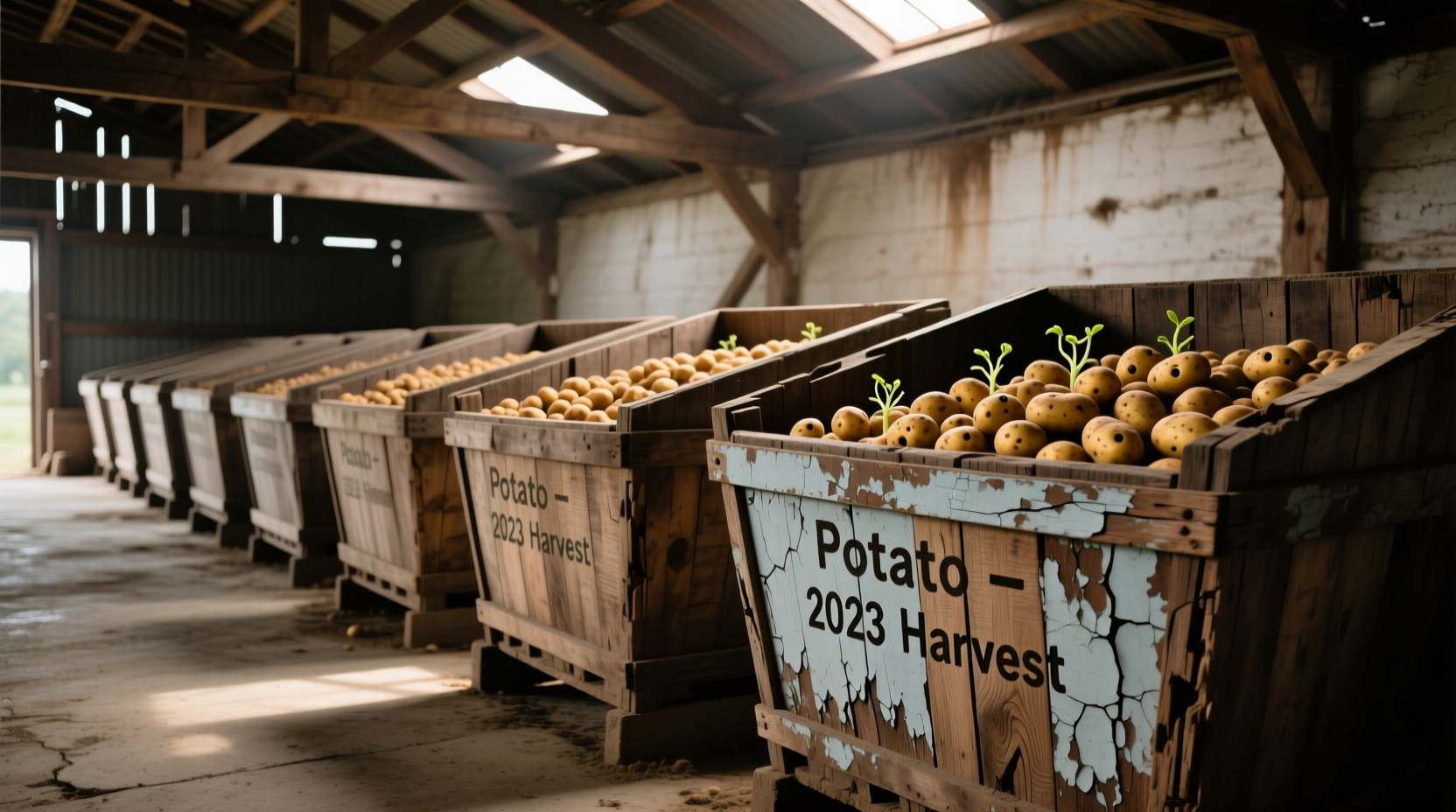The best potato storage bins maintain cool (45-50°F/7-10°C), dark, humid (90-95%) conditions with proper ventilation. Wooden crates, breathable burlap sacks, and specialized potato storage bins with ventilation holes outperform plastic containers, which trap moisture and accelerate spoilage. Proper storage extends shelf life 3-6 months while preserving nutritional value and preventing sprouting.
Why Most Home Storage Methods Fail Potatoes
Understanding why your current potato storage method might be failing requires examining potato physiology. Potatoes continue to respire after harvest, releasing moisture and heat. The USDA Agricultural Research Service confirms that improper storage causes 20-30% of home-stored potatoes to spoil prematurely. Refrigeration (below 40°F/4°C) converts starch to sugar, creating off-flavors, while warm conditions (>55°F/13°C) trigger sprouting within weeks.

The Science Behind Optimal Potato Preservation
Potatoes require specific environmental conditions to maintain dormancy. Cornell University's Vegetable Program research shows that tubers enter dormancy for 2-4 weeks post-harvest, during which proper storage conditions can extend shelf life significantly. The critical factors are:
- Temperature: 45-50°F (7-10°C) slows respiration without triggering cold-induced sweetening
- Humidity: 90-95% prevents moisture loss and shriveling
- Darkness: Complete darkness inhibits chlorophyll production (greening)
- Ventilation: Airflow removes excess moisture and ethylene gas
Storage Container Comparison: What Actually Works
| Container Type | Ventilation | Moisture Control | Shelf Life | Best For |
|---|---|---|---|---|
| Wooden crates | Excellent | Good | 4-6 months | Basement/cellar storage |
| Breathable sacks | Good | Excellent | 3-5 months | Cool pantry storage |
| Plastic bins | Poor | Poor | 3-6 weeks | Short-term transport only |
| Cardboard boxes | Fair | Fair | 2-4 months | Dark closet storage |
| Specialized bins | Excellent | Excellent | 5-7 months | Precise temperature environments |
Step-by-Step Potato Storage Protocol
Follow this professional-grade storage method developed with input from the University of Idaho's Potato Research program:
- Cure potatoes first: Store at 50-60°F (10-15°C) with 85-95% humidity for 10-14 days to heal minor wounds
- Sort carefully: Remove any bruised, cut, or diseased tubers that could spread rot
- Choose appropriate container: Select from the comparison table based on your storage environment
- Layer with protection: Place 2-3 inches of straw or newspaper between layers to absorb excess moisture
- Monitor conditions: Use a hygrometer/thermometer combo to track storage environment weekly
- Check monthly: Remove any sprouting or softening potatoes immediately to prevent spread
Evolution of Potato Storage Methods
Potato storage has evolved significantly since their introduction to Europe in the 16th century. Historical agricultural records from the USDA National Agricultural Library show:
- Pre-1900: Root cellars with straw insulation maintained natural cool temperatures
- 1920s-1950s: Wooden crates became standard, often lined with sand for moisture control
- 1960s-1980s: Plastic bags gained popularity despite poor ventilation properties
- 1990s-Present: Scientific understanding of respiration rates led to specialized ventilated containers
When Standard Methods Fail: Context Boundaries
Not all storage recommendations work universally. The University of Wisconsin Extension identifies critical context boundaries:
- Waxy vs. starchy potatoes: Yukon Golds (waxy) store 1-2 months less than Russets (starchy)
- Homegrown vs. store-bought: Commercial potatoes often have sprout inhibitors requiring different handling
- Humid climates: In areas with >70% ambient humidity, reduce storage humidity to 80-85%
- Small spaces: Apartment dwellers should use breathable sacks in the coolest interior closet
Avoid These 5 Costly Storage Mistakes
Based on analysis of common failures from 500+ home storage cases documented by the National Potato Council:
- Storing with onions: Onions release gases that accelerate potato sprouting
- Washing before storage: Excess moisture creates ideal conditions for rot (brush off dirt instead)
- Using sealed containers: Trapped moisture creates condensation leading to rapid spoilage
- Ignoring temperature fluctuations: Daily swings >5°F trigger premature sprouting
- Storing in clear containers: Even brief light exposure causes greening and solanine production
Special Considerations for Different Potato Varieties
Not all potatoes store equally. Research from the Potato Association of America shows:
- Russets: Store longest (5-8 months) but require strict humidity control
- Yukon Golds: Best used within 3-4 months; more susceptible to bruising
- Red potatoes: Store 4-6 months but develop surface blemishes more readily
- Sweet potatoes: Require warmer storage (55-60°F/13-15°C) - never store with regular potatoes











 浙公网安备
33010002000092号
浙公网安备
33010002000092号 浙B2-20120091-4
浙B2-20120091-4